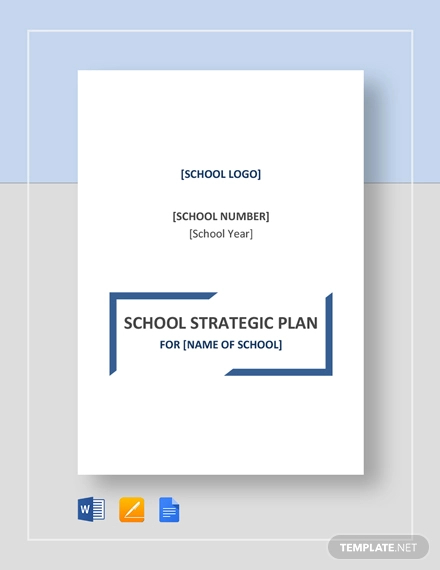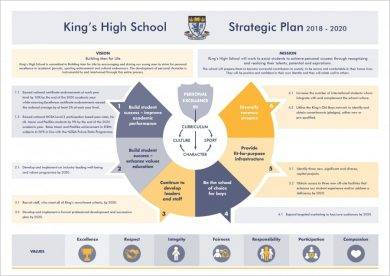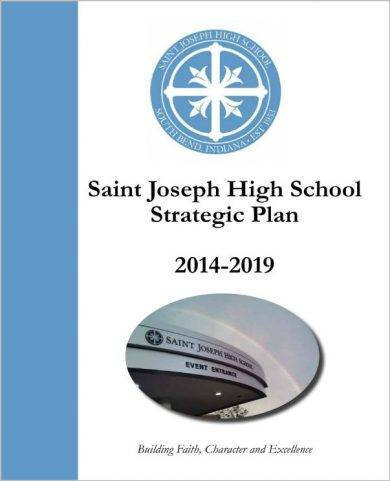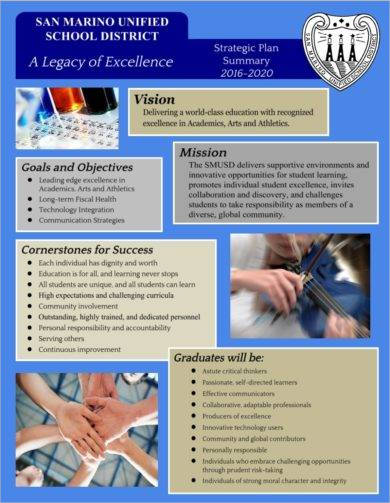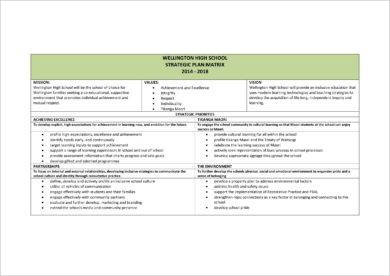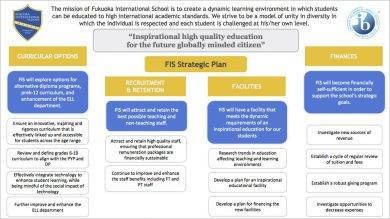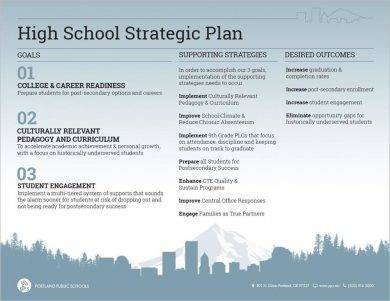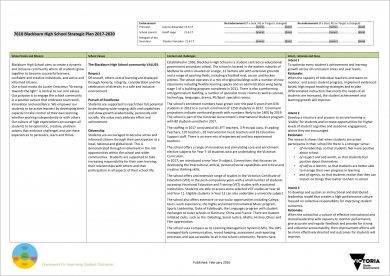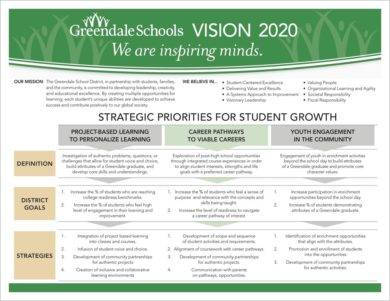10+ High School Strategic Plans Examples to Download
Education is the key to our future. It doesn’t determine who we are or who we become, but it does help shape its students into becoming better leaders, mentors, team players, and responsible members of a community. This is why many schools aim to provide the best possible learning experience for its students to grow before they set foot into the real world. You may also see strategic planning checklist examples.
Any learning institution with a mission to succeed in the best educational interest of its students must have a well-defined plan to achieve this, namely a strategic plan.
High School Strategic Plan Example
3-Year High School Strategic Plan Example
5-Year High School Strategic Plan Example
Catholic High School Strategic Plan Example
The Purpose of Strategic Planning
A strategic plan should not be confused with a business plan, as the two each possess distinctive characteristics that differentiates one from the other. A business plan involves setting short- or mid-term goals for the organization to prosper in a fast-changing market, along with the steps needed to get there. A strategic plan, on the other hand, focuses on the mid- to long-term goals set by the organization and it defines the basic strategies for attaining them.
The purpose of a strategic plan is pretty simple. It is done to set overall professional goals for the organization and to design a plan to obtain them. To do so, one must take a step back from their day-to-day operations to assess where the business or department is headed and what it’s main priorities should be.
Making the decision to grow your organization also means opening doors to potential risks the come with the growth. Taking the time to identify where you want to take your organization—and how you ought to get there—should help you control these risks and take charge of the development process. You may also see recruitment strategy plan examples.
And as your business becomes larger and more complex than when you first began, more time, research, and resources must be committed into formulating your strategy. This is done by collecting and analyzing a wider scope of your organization, specifically about how it runs and about how conditions are gradually changing in your current and prospective markets. You may also like business strategic plan examples.
When operating an academic institution such as a high school, your key mission is to develop outstanding graduations and to create new knowledge that will leave a significant impact on society. Each day spent in your institution should center on the wellness and growth of each student through various learning activities which focus on cooperation, camaraderie, and leadership. You may also check out security strategic plan examples.
Ultimately, the primary purpose of strategic planning is to provide the organization and its staff a sense of direction of where it wants to go, as well as to engage members in a discussion surrounding this thought.
District High School Strategic Plan Example
High School Strategic Plan Example
High School Strategic Plan Matrix Example
International High School Strategic Plan Example
Reasons Why Schools Need a Strategic Plan
Strategic planning isn’t just for businesses and nonprofit groups, as grade schools, high schools, and universities can greatly benefit from such planning method as well.
A strategic plan assists a school in defining what it intends to accomplish when it comes to their student success objectives and organizational goals. With the help of proper planning and open communication, stakeholders, including parents, teachers, principals, administrators, board members, and the community as a whole can strive for the same goals effectively.
However, do bear in mind that proper management of budgetary and time resources, the formation of high-output teams, and the constant monitoring of organizational progress are greatly required in order to implement a successful strategic plan. You may also see sales strategic plan examples.
In addition to what has already been mentioned, here are a few other reasons that explain why strategic planning is critical for schools:
1. It articulates a shared mission, vision, and value.
As members of an organization, you all share a common goal that you must work toward. One of the reasons why employees don’t feel contented with what they do is because of how they fail to understand how the work they’re doing can help their team. But with a well-communicated and performed simple strategic plan, members across different departments of the organization are informed of their shared goals and how their actions contribute to the achievement of these goals.
2. It organizes the school and its staff.
Sometimes, all it takes is a little recognition and motivation to encourage staff members to be committed to their work. They need to know that what they do is essential to the school’s development, which is also a part of a larger strategy to help their school prosper. You may also like department strategic plan examples.
3. It defines how success is measured.
One thing that a strategic plan does is that it defines what success really means. Knowing the true meaning of success allows you to recognize the steps needed to get there.
A school with a strategic plan can easily monitor its progress toward its desired outcomes and evaluate where and how it may have gotten off track along the way. Keep in mind that progress is a dangerously slow process that leaves room for a series of minor or major problems that may greatly impact your plans. This is one of the reasons why developing a plan that can adapt to even the most undesirable circumstances is extremely important.
4. It aids in decision-making and provides direction.
Having a general plan in place builds a road map for the board to follow, evaluate, and monitor to facilitate in the process of making governing decisions and to provide direction for the future of the school and its members. This road map can also help the board make decisions and plans in accordance with the school’s mission. Without it, the school is likely to resolve large problems with temporary solutions that may backfire along the way.
5. It increases communication and engagement.
Transparency and open communication are essential factors for everyone part of the school’s operations to stay connected.
A school is a large institution, so it’s not unusual for a message that was verbally relayed to get lost in translation when passed down from one department to another. Communication is crucial in settings like this, as it’s essential for everyone to understand his or her responsibilities in the organization and that collaboration among departments is apparent. You may also check out personal strategic plan examples.
As an additional benefit, a school that has a clear and established vision and strategy is bound to generate more donors for fundraising and scholarship programs as well. Keeping internal and external groups fully engaged to what the school has to offer provides a framework which ensures that the most important priority of the school, its students’ educational achievement, is taken care of. You might be interested in brief strategic plan examples.
Public High School Strategic Plan Example
Simple High School Strategic Plan Example
Vision 2020 High School Strategic Plan Example
How to Develop an Effective Strategic Plan
Designing a strategic plan is an exercise that your school is likely to undergo once every few years. As head of the school board, preparing a strategic plan for the school is a rigorous process to carry out. It can also be your worst nightmare, which is why you need to make sure you’re taking the appropriate measures to complete the plan. You may also see maintenance strategy plan examples.
Before you begin with your quest, here are a few tips for you to consider:
1. Conduct a thorough situation assessment
A plan should be built on a foundation of facts. Hence, a situation assessment is vital in making informed decisions during the process of strategic planning. This should address three major topics.
The Appetite for Change
The need for a strategic plan exists mainly because the board craves for change to occur within the institution. Since most strategic plans are created once every five to ten years, the board’s appetite for change covers a much wider scope than you might have realized. You may also like procurement strategy plan examples.
Take note that the board is responsible for approving the plan and allocating the resources necessary to support its implementation, so impressing the board with a plan that meets their standards should be one of your primary objectives. If they don’t buy into your plan, the strategic planning process will come to an end, with nothing more than unsuccessful results and a complete waste of resources. You may also check out research strategic plan examples.
Documenting How Things Work
Don’t assume that anyone—including you and the board—fully understands the way things really are at the school. You must prepare a detailed description of every functional area, including everything from the administrative functions to the academic functions, along with those responsible for the functional activities being managed. You might be interested in marketing strategy plan examples.
Studying Significant External Factors
Relevant factors that exist beyond the control of the school must also be studied as part of the assessment. This includes competing schools, demographic changes, and teaching personnel availability.
These factors are usually identified through parent surveying methods. Here, the school can generate insight as to how parents perceive the strengths and weaknesses held by the school in terms of how it manages its administrative and academic functions. This can also be performed through a SWOT analysis for proper evaluation.
2. Strategic planning as a review
Strategic planning is not a developmental process, rather, it is a general review of the eight basic strategies that are under total control of the head (you) and the board. These strategies must be reviewed to ensure they meet board expectations and the likely evolution of factors in the environment. You may also see health and safety strategic plan examples.
- Business Mandate Strategy – This refers to how broadly a school interprets its founding mandate.
- Sustainability Strategy – This involves how much risk the school is prepared to accept assuming that the strategies indicated in the plan are implemented.
- Growth Strategy – The acceptable type and rate of growth.
- Financial Management Strategy – This explains how the school generates its funds and how it uses capital.
- Technology Strategy – This discusses how the school uses technology to enhance administrative productivity or to deliver a competitive advantage over other schools in the market. You may also like hospital strategic plan examples.
- Organization Management Strategy – Determine whether the school focuses on the process or its results as the primary means of managing school activities.
- Marketing Strategy – How does the school find and satisfy its customer base (parents and students)? Most schools design special brochures, flyers, and posters to exhibit at educational conventions and school fares. Others even take on a more advanced approach for their marketing strategy through the use of websites and social networking pages.
- Service Delivery Strategy – How the school delivers its utmost service to its customer base by balancing efficiency with effectiveness is a critical factor to review as well.
Finally, connect the eight-strategy framework to your school’s current organizational structure. Though it may be difficult to describe the present strategy accurately, doing so can help you gain further insight about how the school operates. You may also check out audit strategic plan examples.
3. Creating vision and mission statements last
While many strategic planning processes suggest starting the planning procedure by identifying your long-term vision statement and shorter-term mission statement for the school, this is actually a mistake you would want to avoid.
For one, the terms vision and mission are actually quite synonymous with a strategy. In no way can you develop an effective strategy without studying its internal and external aspects first. This is because gaining a deeper understanding of the competitive reality of a school is one of the key factors in determining the strategies needed to address these concerns. You might be interested in legal strategic plan examples.
Secondly, it’s important to formulate vision and mission statements that provide faculty, staff, students, and parents a better understanding of what the school is aiming for. By developing solid conclusions based on the eight-strategy framework, you can draft vision and mission statements that fully capture the essence of your school. One that is inspiring enough to guide and nurture staff members of a school along with its students.
Schools, similar to other not-for-profit organizations, must have a strategic plan ready to guide its employees into building a healthy and organized environment for its students and fellow staff members. Although this may be a long, daunting process to fulfill, when done correctly, a strategic plan can offer significant benefits for the school and its members. You may also see communication strategy plan examples.



